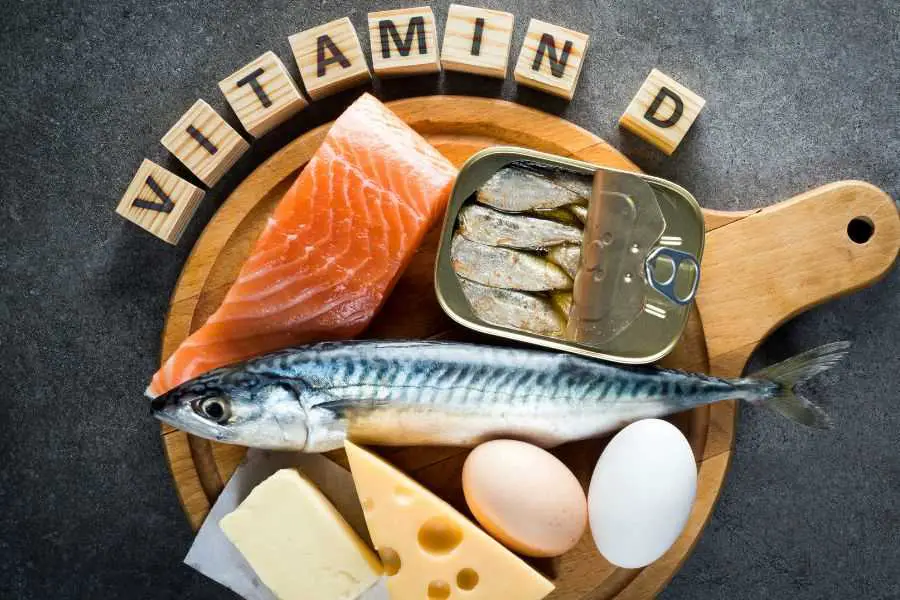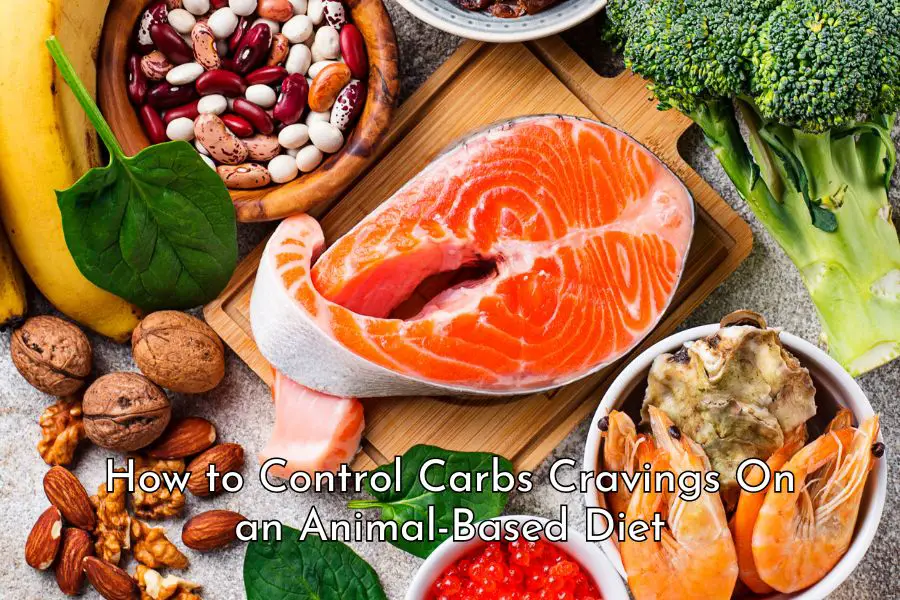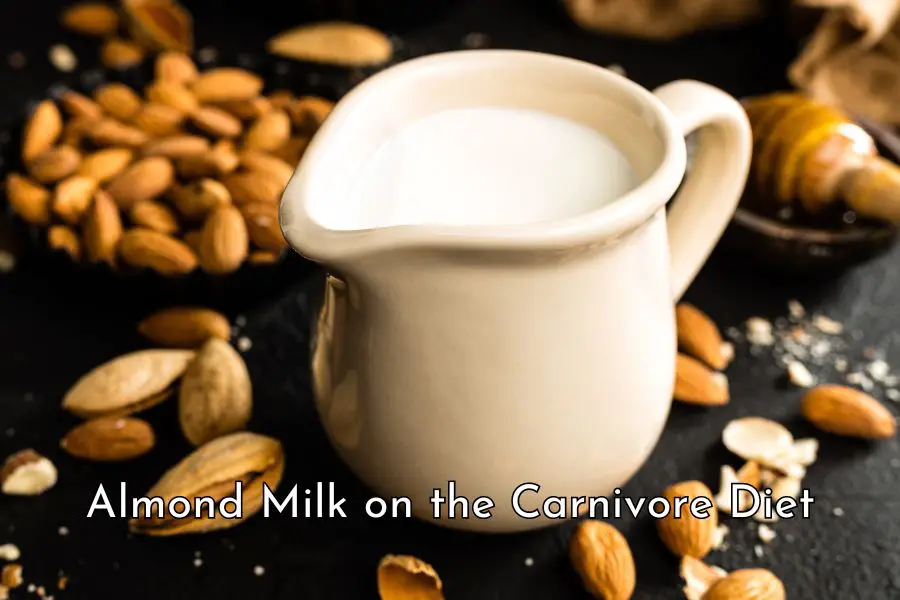On the carnivore diet, if you just eat meat and don’t eat a lot of seafood, especially oily fish, you won’t get a lot of vitamin D from dietary sources. However, you still can get enough vitamin D if you have daily sun exposure of just 10 to 20 minutes during summertime or a couple of hours during wintertime without using sunscreen.
Only in rare cases where you don’t eat fish and are not able to get enough sun exposure then you might need to supplement with vitamin D or use a sun lamp.
In this post, we will look at the important roles that vitamin D plays in the human body, the RDAs for vitamin D, animal-based sources of vitamin D and why it is generally not necessary to supplement with vitamin D on the carnivore diet.
Vitamin D and its roles in the human body
Vitamin D is an essential fat-soluble vitamin that the human body cannot produce itself and must obtain through external sources including diet and sun exposure. Vitamin D is special in that it is both a hormone and a vitamin. [1]
Vitamin D plays many crucial roles in the human body. Its most important and widely recognized function is to help the body absorb calcium and phosphorous which is critical for maintaining healthy bones and teeth. [2, 3]
Vitamin D’s other functions include reducing inflammation, modulating cell growth, and regulating glucose homeostasis, blood pressure, gene expression, and the immune system. [4, 5, 6]
Vitamin D can be obtained in two ways: through exposure to sunlight (UV rays) and through consumption of vitamin D rich foods such as fatty fish (e.g. salmon, tuna, and mackerel), egg yolks, and fortified foods. Vitamin D supplement is an option as well.
Low vitamin D status due to insufficient intake of vitamin D, lack of sun exposure, or poor absorption can lead to health problems including rickets and other developmental delays in children, osteomalacia in adults, muscle weakness and pain, and an increased risk of certain diseases. [7, 8]
How much vitamin D do you need?
The current RDAs for vitamin D for adults vary between around 15 and 20 mcg/day depending on age, gender, and pregnancy status. [9]
| Age | Male | Female | Pregnancy | Breast-feeding |
|---|---|---|---|---|
| 0-12 months (AI) | 10 mcg (400 IU) | 10 mcg (400 IU) | ||
| 1–13 years | 15 mcg (600 IU) | 15 mcg (600 IU) | ||
| 14–18 years | 15 mcg (600 IU) | 15 mcg (600 IU) | 15 mcg (600 IU) | 15 mcg (600 IU) |
| 19–50 years | 15 mcg (600 IU) | 15 mcg (600 IU) | 15 mcg (600 IU) | 15 mcg (600 IU) |
| 51–70 years | 15 mcg (600 IU) | 15 mcg (600 IU) | ||
| >70 years | 20 mcg (800 IU) | 20 mcg (800 IU) |
Given how much sun exposure our ancestors had over millions of years and our dependence on it for survival, some argue that the current RDAs are still not adequate. [10]
Nevertheless, if you accept these for now, you will not have much difficulty reaching the recommended vitamin D intake through sun exposure or through food.
If you live where there’s a lot of sunlight all year around, you definitely won’t have to worry about not meeting those RDAs. For light-skin people, just 10 to 20 minutes of exposure to the midday sun during spring and summer months will be enough to get their recommended daily intake of vitamin D. [11]
But during winter months, those same people may need a couple of hours of sun exposure to get enough vitamin D. This is because UVB rays from the sun are weaker in winter and we tend to have a smaller body surface area exposed. However, most light-skin people would get enough vitamin D from sun exposure even in winter time provided that they don’t fully cover their body from head to toe. [12, 13]
Apart from sun exposure, a few servings of vitamin D rich oily fish like herring, salmon, or sardines a week plus daily sun exposure should be sufficient to meet these RDAs (see data below).
People of color, however, will need more sun exposure because their skin pigmentation significantly reduces their body’s ability to make vitamin D in their skin. This group also needs to ensure they consume sufficient vitamin D from dietary sources or supplements to meet the RDAs. [14]
Furthermore, as we get older, our ability to produce vitamin D in the skin also decreases significantly. The amount of vitamin D produced in the skin of an 18-year-old is about two times higher than in people in their 70s. Therefore, it is important for the elderly to get enough sun exposure, follow a vitamin D rich diet or take vitamin D supplements. [15]
Sources of vitamin D on the carnivore diet
The main sources of vitamin D on the carnivore diet are oily fish, fish liver oil, eggs, and cheese (which is sometimes fortified with vitamin D). Meat including organ meat has a negligible amount of vitamin D.
Oily fish like herring, sardine, mackerel, and salmon can synthesize vitamin D but mostly get it from their diet. They store vitamin D in their adipose tissues and livers and that is why cod liver oil, a popular supplement, is especially high in vitamin D. [16, 17]
Farming practices can have a significant impact on vitamin D levels in fish. For example, in one study, wild salmon’s vitamin D content was found to be 4 times higher than its farmed counterpart. [18]
As can be seen in the table below, oily fish and fish are the best sources of dietary vitamin D. Egg and cheese contain a very low level of vitamin D.
| Food (100g) | Vitamin D (IU) | %DV |
|---|---|---|
| Cod liver oil (100g) | 10001 | 2500% |
| Cod liver oil (1 tsp) | 450 | 113% |
| Herring | 1628 | 407% |
| Halibut | 600 | 150% |
| Catfish | 500 | 125% |
| Mackerel | 360 | 90% |
| Sardine | 272 | 68% |
| Salmon | 240 | 60% |
| Shrimp | 152 | 38% |
| Egg | 35 | 9% |
| Parmesan cheese | 28 | 7% |
| Cheddar cheese | 12 | 3% |
| Camembert | 12 | 3% |
Beef, lamb, pork and chicken all have negligible levels of vitamin D (see table below).
For example, one kilogram of beef steak or liver (2.2 lb) has less than 0.5 mcg of vitamin D3. With a recommended daily intake of 15 to 20 mcg per day, without sun exposure, it would be impossible to get the recommended 12 to 20 mcg of vitamin D a day by eating just meat. [19]
| Food | Vitamin D3 (mcg/kg) |
|---|---|
| Beef steak | <0.5 |
| Beef liver | <0.5 |
| Beef kidney | 1.3 |
| Pork fillet | 1.1 |
| Pork liver | 4.0 |
| Lamb leg steak | 0.4 |
| Chicken leg | 3.0 |
| Chicken fillet | 2.0 |
Do you need to supplement with vitamin D on the carnivore diet?
Generally, you don’t need to supplement with vitamin D on the carnivore diet because you can get sufficient vitamin D from incorporating seafood, especially oily fish, into your diet on a regular basis.
For example, just a 100-gram serving of salmon will give you 60% of your daily vitamin D value while the same serving of herring will give you four times the recommended daily value.
If you are relying on oily fish on this diet to meet your vitamin D requirement, try to get wild-caught fish if you can.
It is estimated that today about half of all fish consumed worldwide are farmed. Farmed fish are generally raised in poor conditions, fed an unnatural diet, and injected with all sorts of chemicals. [20, 21, 22]
Recently, Tassal, a large aquafarm based in Tasmania, Australia, tried to block the release of a report relating to its use of more than two tonnes of antibiotics at two of its fish farms. [23]
In addition, farmed fish are increasingly fed plant-based feed at the expense of fishmeal and fish oil which is where fish get their vitamin D from. [24]
We really don’t know what else might be going on behind closed doors so it’s best to stay with wild-caught fish as much as we can.
Even if you don’t like to eat fish or can’t eat fish on the carnivore diet, you still can get enough vitamin D from sun exposure. Exposing to one minimal erythemal dose (enough sunlight to cause a light pinkness to the skin) has been found to be equivalent to taking around 15,000 to 20,000 IU of vitamin D. This is 19 to 25 times the recommended daily intake. [25]
As mentioned above, just 10 to 20 minutes of exposure to midday sun during spring and summer months will be enough to get the recommended daily intake of vitamin D. During winter months, however, you’ll have to extend that to a couple of hours a day to get enough vitamin D. [26]
It is important that you don’t use sunscreen when you are exposed to the sun during this period of time because sunscreen with an SPF of 30 can reduce the production of vitamin D in the skin by about 95%. [27]
While there is a genuine risk of skin cancer due to excessive sun exposure, with an estimated 50% of the world population having inadequate vitamin D levels, many people actually don’t get enough sunlight. The global health burden due to insufficient sun exposure presently far outweighs the burden to due excessive sun exposure. [28, 29]
Only for a very small minority who doesn’t eat seafood, live in the latitude where there is limited sunlight (the closer to the poles, the less sunlight you have), or work in conditions that prevent sufficient sun exposure, supplements might be needed.
If you want to supplement with vitamin D, cod liver oil is probably the best option.
A vitamin D sun lamp is another option to get enough vitamin D for this group. The sun is more than just a source of vitamin D. You cannot get the same amazing feeling that the sun brings by taking a few pills.
Other posts you might be interested in:
Is Carnivore Diet + Fruit & Honey a Good Idea?
Best Sources of Omega 3 on the Carnivore Diet
How Much Organ Meat Should You Eat on the Carnivore Diet?
Do You Need Supplements on the Carnivore Diet?
What Do Hardcore Carnivores Eat in a Day?
Disclaimer: The information in this post is for reference purposes only and is not intended to constitute or replace professional medical advice. Please consult a qualified medical professional before making any changes to your diet or lifestyle. Please check out our disclaimer for more detail.





